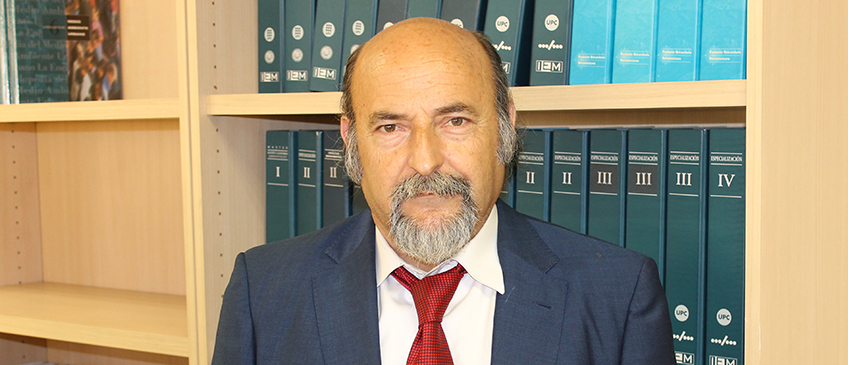The director of FUNIBER’s Cultural Work, Federico Fernández, explains the current exhibitions available to the public and how they have been adapted to the restrictions due to the Covid-19 pandemic.
How did the Covid-19 pandemic affect the concerts and itinerant inaugurations of FUNIBER’s Cultural Work?
The adopted measures against Covid-19 surprised us with many exhibitions already underway and others about to be mounted. Here in Spain, it coincided with the exhibition of the painter Anna Tamayo in Ponferrada, which Anna and I inaugurated in person with the attendance of numerous media, press, and TV. We even had a long interview on TV in which we were accompanied by the head of activities of the University of León (ULE), Professor Cesar Ordóñez.
With the Covid-19 measures, this exhibition, as well as others in the same situation, remained in their places of exhibition, were closed, or remained with very limited and controlled visits. Anna’s exhibition moved to the hall of the Ateneo Cultural El Albéitar de León after waiting for the measures to allow it, inaugurating the restart of the exhibition.
In Laredo (Spain) we exhibited “El Canto del Sol y Las Maravillas Acrósticas” in which I participated in person in the presentation with mask, social distance, and attendance control. The session was recorded by the City Council of Laredo and broadcast on the networks.
In-person concerts were suspended, because they implied personal risk to the artist, due to travel, the public in closed venues, and because of the more restrictive measures in this field.
What security measures are being implemented at the most recent exhibitions?
At present, several exhibitions are on display in different offices throughout Spain and America, but the measures do not coincide. So, the different offices ask us to carry out the exhibition according to the standards of their region or country.
In Guatemala, there is the exhibition “Tàpies, colección del grabador Barbará”. In Mexico, there is the collection “Del capricho al disparate” by Goya and Dalí, substituting in-person presentation for a virtual presentation.
In León, the exhibition by artists Joán Ponç and Jaime Muxart remains open, which replaced the exhibition “Aún sorprendo”, by Picasso, which, according to the press, had a controlled attendance, but even higher than exhibitions prior to the pandemic, remains open at present.
What new exhibitions are being prepared for the coming months?
Picasso’s exhibition “Aún Sorprendo” is ready to begin a grand tour of the Americas in time for the Bicentennial of Independence.
Miró’s “El Canto del Sol” has returned to Spain and is on display at UNEATLANTICO, an institution belonging to the FUNIBER network. “Las maravillas acrósticas” also by Miró, is available for exhibition in Spain.
The exhibition “Dalí vs. Miró” has returned from America and will be on display at UNEATLANTICO and at different Spanish venues.
A new exhibition by Antoni Tàpies and the engraver Joan Barbarà, and a large exhibition of engravings by Antonio Clavé with works dating from 1949 to the 1980s are in the framing phase.
As the collections return after years in the Americas, they will be exhibited in Spain, and new exhibitions for the Americas will be renewed.
With the progressive vaccination of the population, is the transfer of the latest exposures to more countries expected?
Clearly, the more security, the greater the demand for exhibitions and, where appropriate, live concerts.
We hope that “normality” will soon return, that it will revitalize cultural activity, although for our part it has not ceased for a second during this long year under the pandemic.
What initiatives do you know of that have been carried out during the pandemic to promote art without going to museums or galleries?
Since the beginning of the pandemic, travel and personal attendance at inaugurations were avoided, replacing them with video presentations made in Spain. We have made virtual presentations for Campeche (Mexico), Guatemala, Dominican Republic and for León and Ponferrada (Spain).
In the case of León and Ponferrada, live connections were made with authorities and journalists and a long interview with TV, which is available on the networks.
A special case is the virtual exhibition carried out by FUNIBER, the Mexican Embassies in Ghana and El Salvador and the Spanish Embassy in Ghana.
